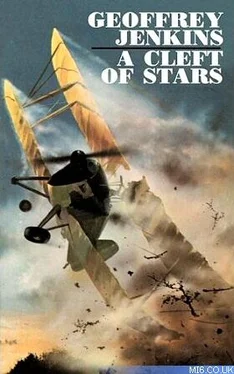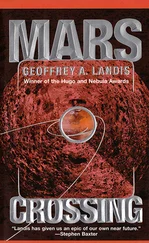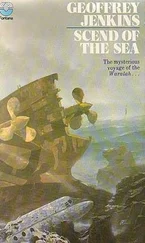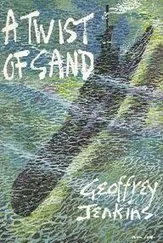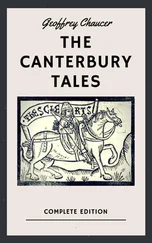Geoffrey Jenkins - A Cleft Of Stars
Здесь есть возможность читать онлайн «Geoffrey Jenkins - A Cleft Of Stars» весь текст электронной книги совершенно бесплатно (целиком полную версию без сокращений). В некоторых случаях можно слушать аудио, скачать через торрент в формате fb2 и присутствует краткое содержание. Жанр: Прочие приключения, на английском языке. Описание произведения, (предисловие) а так же отзывы посетителей доступны на портале библиотеки ЛибКат.
- Название:A Cleft Of Stars
- Автор:
- Жанр:
- Год:неизвестен
- ISBN:нет данных
- Рейтинг книги:4 / 5. Голосов: 1
-
Избранное:Добавить в избранное
- Отзывы:
-
Ваша оценка:
- 80
- 1
- 2
- 3
- 4
- 5
A Cleft Of Stars: краткое содержание, описание и аннотация
Предлагаем к чтению аннотацию, описание, краткое содержание или предисловие (зависит от того, что написал сам автор книги «A Cleft Of Stars»). Если вы не нашли необходимую информацию о книге — напишите в комментариях, мы постараемся отыскать её.
A Cleft Of Stars — читать онлайн бесплатно полную книгу (весь текст) целиком
Ниже представлен текст книги, разбитый по страницам. Система сохранения места последней прочитанной страницы, позволяет с удобством читать онлайн бесплатно книгу «A Cleft Of Stars», без необходимости каждый раз заново искать на чём Вы остановились. Поставьте закладку, и сможете в любой момент перейти на страницу, на которой закончили чтение.
Интервал:
Закладка:
It is the supernatural which elevates it to this claim — a curse so old and deep-rooted that The Hill is regarded by natives as the ultimate taboo. To merely look at it, they maintain, means death. Consequently a large area round about it has been left uninhabited for centuries. Far away from it, if the dreaded name The Hill is mentioned, natives will turn their backs in its direction. They believe it is sacred to the great ancestral spirits who lodged their treasures in its fastnesses. Nothing is known of its past, except legend, since Africa has no indigenous written history. No other hill holds so many unexplained secrets; the dark crumbling rocks, recesses and ruined fortifications, built and laid out with almost uncannily modern skill, seem to draw a cloak of mystery about themselves. There is a palpable air of dread and death. One almost expects to see the strongpoints on the skyline come alive with the soldiers of a vanished master-race manning it against phantom hordes sweeping in from the north.
It took nearly a century of European occupation of the Transvaal before the taboo, the remoteness, the malaria, wild animals and the intolerable heat which had isolated The Hill were overcome. In the early 1930s a terrified native broke the age-old curse and showed a farmer-prospector the secret route to the summit. There had been a cloudburst a day or two before, and gold lay exposed. Frenzied scratching With hunting knives revealed the first evidence of Africa's strangest and richest treasure trove since Tutankhamen. The men had happened on a royal grave which was later to yield a golden crown and regalia, a golden model rhino idol and countless gold beads. Priceless lesser articles also came to light, such as superb pottery related to vanished Middle East civilizations, striking large beads with a similar background, and Chinese porcelain of the late Sung period (twelfth to fourteenth centuries AD). Outside Egypt, no hoard like it has been discovered in Africa, before or since.
One of the treasure-finders was a student from Pretoria University. He and his father, recognizing the uniqueness of the discovery, turned over its secret to the institution. The state stepped in and further treasure-hunting was banned. Part of The Hill was excavated scientifically before the outbreak of World War II put an end to the operations. Before this, however, the experts were startled to find evidence of ancient religious practices, including 'beast burials' and funerary urns, which have no parallel on the Dark Continent south of the Sahara. The skill of the goldwork and purity of the metal is hard to match-even in the space age. A ceremonial cemetery points to the fact that this sophisticated master-race, which held Africa at bay from a position chosen with unerring military insight, passed away peacefully and not by conquest. Long after they had disappeared, their curse held The Hill shut fast.
Nadine and I, fellow-students in archaeology at the Witwatersrand University, joined the first post-war expedition to The Hill with enthusiasm. I was in my middle twenties, a late starter because of the war, most of which I spent in a German POW camp; and she about five years younger. I had been too busy with my studies to take much notice of the dark-haired girl who was rumoured to be the richest in the university, daughter of Harold Raikes the magnate, a household word in the Golden-City.
Our convoy of three Land-Rovers had rendezvoused at Messina and had then struck westwards, parallel to the Limpopo, to reach our destination. It was a rough, tough trip and one vehicle was damaged. There was a great deal of preliminary work to be done before the excavations proper could start. Much of the previous scientific work had been lost because the pits and trenches had been choked with soil. In any event, pre-war expeditions had concentrated mainly on the north-western tip of The Hill's tabletop summit where the queen's grave and its treasures had been discovered. This was clearly only a part of the occupation area. Dr Drummond, the professor who had led the expedition, believed that the whole summit and a surrounding walled area at ground level had formed a unit as a fortress-city. He decided to start operations within the containing wall on the ground, concentrating on two places: the foot of the secret stairway, and at another about 150 yards away also against the cliffs. This latter was named Mahobe's in honour of a long-dead chieftains of the nearest tribe. Nadine was to me no more than one of a group during the early stages of the expedition. Perhaps her beauty and wealth made her a little remote. Then, one afternoon when most of us were working at the secret stairway site, there was a sudden shout from Nadine at Mahobe's. Our 'dig' was considered to have better prospects than Mahobe's, which was more or less a shot in the dark. It was not an excited whoop but there was something in her voice which had us all at her trench in a flash.
Nadine was on her knees in the excavation, bare-headed, her dark hair flecked with the dust which coated everything at the slightest breeze. She wore a pair of faded fawn jeans and a golden-yellow shirt, open at the throat. I stopped short. I stared, not at the priceless thing she held, but at her face. Maybe the fire of the malaria already burning in my veins or which I was shipped away prematurely before I really got to know The Hill sharpened my perception of Nadine. She knelt in the trench, in a curious votive attitude, facing The Hill and cradling the statuette she had found, as though in some strange way identifying with its age-old mystery. She did not look up at us but simply crouched there with the thing in her arms. All the millenia of Africa seemed to be epitomized in that vignette of the sinister Hill and the lovely girl bowed in the dust at its foot. Suddenly, too, I was acutely aware of the unusualness of her face: there appeared to be some Eastern Mediterranean derivation in its dark loveliness, but the classic line was broken by the high, almost Slavic cheekbones, the generous mouth and straight, full eyebrows. She was looking at the figurine, calmly and impassively, with an air of detachment from her surroundings.
The spell was broken by a noisy barrage of questions, excitement and congratulations. Nadine stood up and passed the figure, still partly hidden in a lump of earth to Dr Drummond. With a loud exclamation he took it from her while the others crowded around. Nadine still stood waist-deep in the trench: I went to her and offered a hand to pull her up. I then saw what was in her eyes. It was only for a few seconds that we stood so, her foot braced for the jump, our hands and eyes locked. I hauled her up — a little too vigorously perhaps -
for at the top she was slightly off balance and lurched against me. She steadied herself after a longer pause than was necessary. She _stared at me curiously, searchingly, the sea-green of the fine eyes still hazed from their mute communion with the unknown. She then joined Dr Drummond, who was pouring out excited, expert praise. I stood back from the group.
Dr Drummond declared she must have found some place of ritualistic worship. Work was called off for the day to clean up and examine Nadine's find. We gathered in high anticipation in the big marquee which served as a mess room and the professor prepared to extract the statuette from its matrix, as the envelope of earth is called. The late afternoon brought no relief from the heat. It came in waves through the shimmering canvas. My ears started to ring and I felt nauseated. Nadine helped Dr Drummond deftly with drills, probes and brushes. As the figure became progressively exposed Dr Drummond became more excited. It was a female figure, carved from a material which resembled ivory. The head was revealed first, showing clear, fine features, a rather prominent nose and high forehead. The breasts were capped with gold leaf of afer thinness. Dr Drummond exclaimed that the metal was as thin and apparently as pure as any modern process could achieve. More earth was cleared and we saw the navel similarly capped in gold. As the matrix was brushed off further to expose the waist, however, no more of the precious metal came to light. Then the last concealing fragment of earth fell away, showing buttocks which had none of the gross enlargement called steatopygia which is the sign of a primitive race. It was a slim body fashioned in perfect physiological detail. A hush fell upon the onlookers and Dr Drummond handed the figure to Nadine. He began drawing some comparison with emphasis on sex worship among the Hamitic peoples of the Mediterranean coastline. In the heat haze the, group seemed far away, as if I were looking at them through the wrong end of a telescope. The oppressiveness bore down upon me; the buzzing in my ears grew. I did not know that malaria was at work. I was able to focus only by screwing up my eyes. I swayed on my feet, waves of hot and cold sweat sweeping across me. The nearest thing to it I had known was air-sickness.
Читать дальшеИнтервал:
Закладка:
Похожие книги на «A Cleft Of Stars»
Представляем Вашему вниманию похожие книги на «A Cleft Of Stars» списком для выбора. Мы отобрали схожую по названию и смыслу литературу в надежде предоставить читателям больше вариантов отыскать новые, интересные, ещё непрочитанные произведения.
Обсуждение, отзывы о книге «A Cleft Of Stars» и просто собственные мнения читателей. Оставьте ваши комментарии, напишите, что Вы думаете о произведении, его смысле или главных героях. Укажите что конкретно понравилось, а что нет, и почему Вы так считаете.
